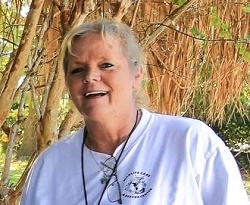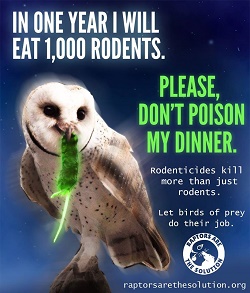Frequently Asked Questions
Q.: If you find a baby bird and it has to be touched by a human to be returned to it's nest, will the parents come back to their babies to feed?
A.: YES!! This was an old wives tale, that momma birds would no longer feed their babies if they had the scent of a human. This is not true. Even if you have to create a make-shift nest out of an easter basket with straw and hang back up in the tree, the momma bird will come back and feed their babies.
Q.: There is a wild animal in my attic, how do I get rid of them?
A.: Typically a wild animal will get in to an area of attic via an open eve or possibly even a rotted board. Sometimes leaving small bowls of ammonia soaked rags will drive the animals out of the attic. Once an animal has been driven out, it is very important for the home owner to repair the opening where the animal was able to enter. In some cases, the home owner may have to seek additional assistance by enlisting an animal removal service.
Q.: I have birds in my chimney, and one has fallen in the fireplace, what do I do?
A.: Typically, the birds found in chimneys, are Chimney Swifts. These birds build their nests out of sticks and their own saliva. These nests are attached to the chimney wall. As the babies grow, the nests becomes over-crowded, thus resulting in babies falling out or possibly even the whole nest falling. We typically tell people to get a small basket and a tree limb, nail the basket to the top of the tree limb and fill with straw. Many times, the parents will come back down the chimney to feed them. These birds are known to be very noisy but their time in the nest is short lived and before long they will fly away. Once the birds have grown and you are certain they have fledged, the home owner has the responsibility to cap the chimney to prevent the Chimney Swifts from re-entry.
Q.: How can you protect your domestic animals from wildlife?
A.: The WCRC spends much of its time rescuing and rehabilitating native wildlife. Another of our responsibilities is educating people about the wildlife and ecosystems in which they live.
I have been working as a veterinarian technician for many years and I have seen a number of instances where dogs and cats have been injured or have gotten sick, many with only speculation that some wild animal may have been involved. So I want to give a couple of tips on what you can do to ensure the safety of your family pets.
I, myself, am the owner of a little dog that lost a front limb to an alligator a couple of years ago. This happened when the original owners where walking the pup to close to the edge of a waterway. The alligator most likely homed in on the dog long before it reached the point where the gator lunged out of the water, hoping for an easy meal.
Just in the last month we have had 2 small dogs rushed to the veterinarian clinic where I work, after being found in their yard pinned down by a large bird of prey, both identified as hawks. During the winter months, much of their normal prey (squirrels, rabbits, snakes for example) become scarcer. This is also the time of year where some of our birds of prey are starting to nest, so food becomes even more sought after. Small dogs, left unattended in gardens, and free wandering cats, become easy targets for these birds of prey. Birds of prey are just as their name implies so when you let your little furry family member outside stay with it for their protection. Try to keep your cats confined to your home or premises. Hawks and owls do not understand that the little Yorkie or fluffy kitty is a family member; to them it’s a food source.
It is also very disheartening to me at the amount of photos I see on peoples FaceBook pages of wildlife interacting with family pets. People find baby wild animals in the spring, they want to keep and try to raise the wild baby. Eventually you will find pictures or video of their pets interacting with the wild animal; unknowingly the pet parent may be exposing either wild animal or pet to parasites and diseases.
When wildlife becomes accustomed to being fed by people they loose their fear of the presence of humans and domestics. The foods fed are not normal diets (dog food, cat food, human food) which cause many health issues for the wild animal. When wildlife is enticed to come to your property to feed they can pass along such things like mange, parvovirus, distemper, rabies, bayliscaris round worm, hookworms and the list goes on, to your beloved pet. This situation can be increased when they are allowed to share the same food and water containers with your dog or cat. Upon defecating and urinating they are contaminating the ground area where your pets reside.
It’s not only your domestics that need to be protected, you and your property fall into this category. Under the right conditions humans can contact parasites and mange. Wildlife like squirrels, raccoons, possums can take up residency in your residence causing damage to buildings, wiring and other areas. Introducing wildlife by catering to them can quickly escalate out of control then animal removal specialists are called in to remove these now “unwanted wild animals”. These wild animals are typically euthanized after they are removed.
So, in a nut shell, watch your little fur babies when outside and don’t leave them unattended. Do not feed wildlife when it shows up on your property, besides, it is against the law. Keep your pets vaccinated and have them checked at least twice a year for parasites. As the warm weather approaches, keep pets away from waterways where alligators may be present. Enjoy your wildlife by viewing it from a distance and let them remain wild. This will also help to ensure your family pet will be safe, happy and healthy.
The two little hawk attacked dogs did survive their ordeal and are safe under the watchful eyes of their human family member.
Q.: I have a snake on my property what can I do?
A.: While we may never change everyone’s mind about snakes, we do ask that people respect them and not kill everyone they see. Non-venomous and venomous snakes hold a special place in our environment. Killing a snake just because they are a snake can have a devastating effect on the ecosystem. Snakes consume a large quantity of rats and mice than can harbor viruses which can be detrimental to other animals and humans. Rodents also destroy thousands of dollars annually on crops and damage personal properties. Snakes are an important food source for many other mammals and birds of prey. Killing snakes is destroying one of the best forms of rodent control. Toxins from some venomous species can kill people; it may also be what saves a person life. We encourage you to learn more about the medicinal importance of our venemous snakes. If you find a snake on your property, please contact us immediately and we will safely remove and relocate it for you. You may reach us at (228) 669-2737.
Expert Advice

Alison Sharpe:
I founded the organization in 1994. At this time, I worked for the University of Southern Mississippi as a Marine Education Specialist. Much of the wildlife education I conducted was incorporated in to the programs I taught while employed, for eleven years, at the J.L. Scott Marine Education Center. Under one of our federal permits, I still conduct many educational programs throughout the year.
